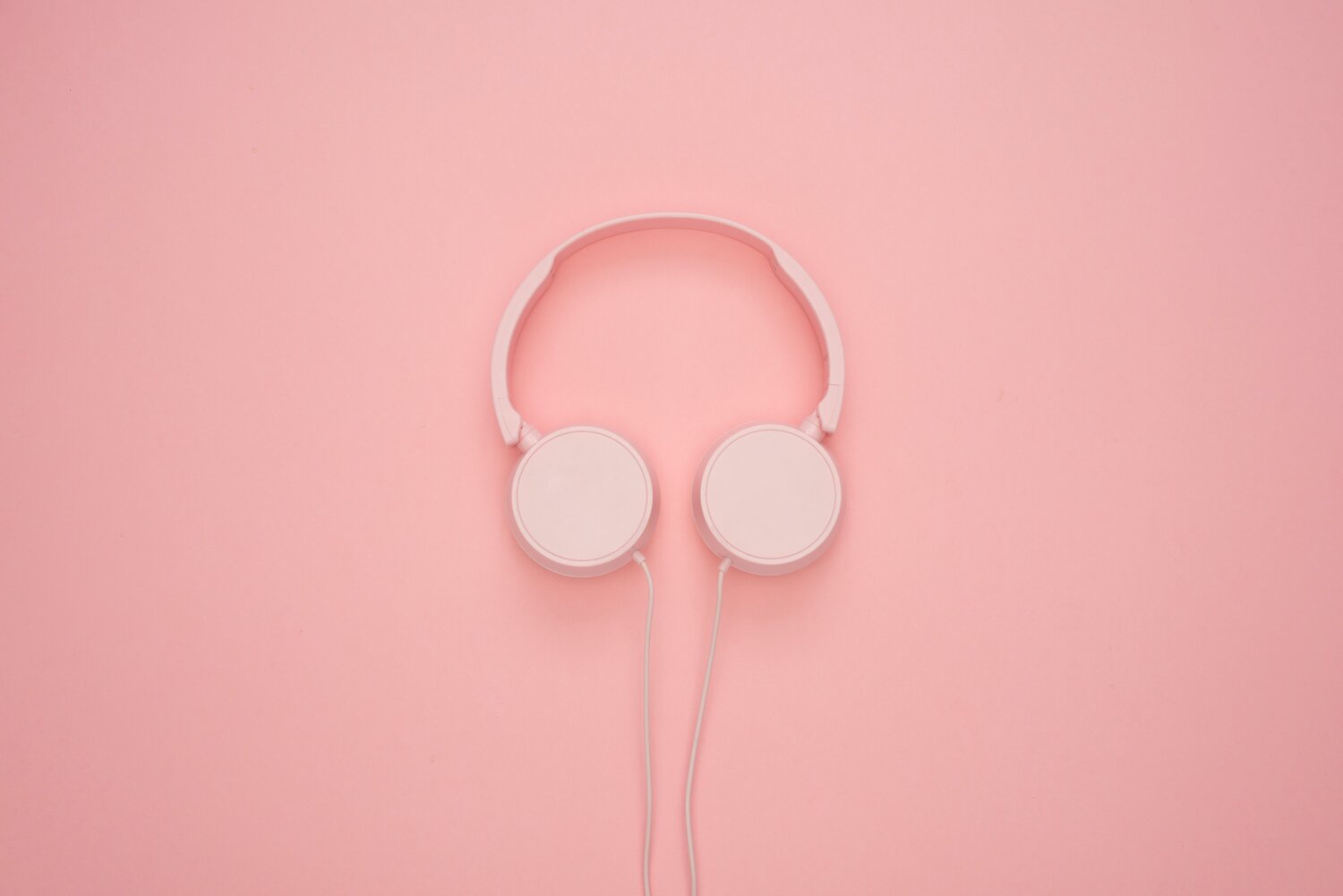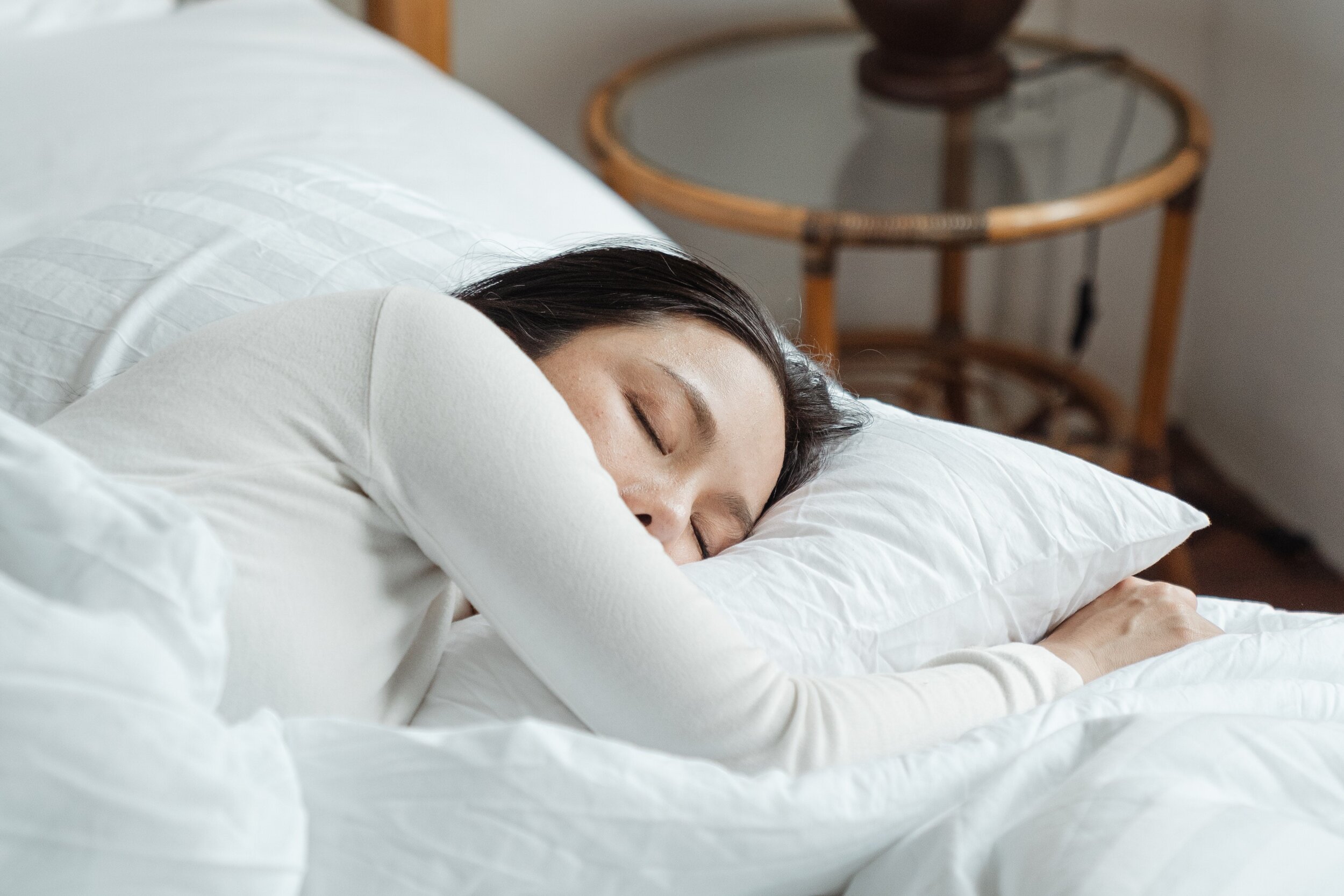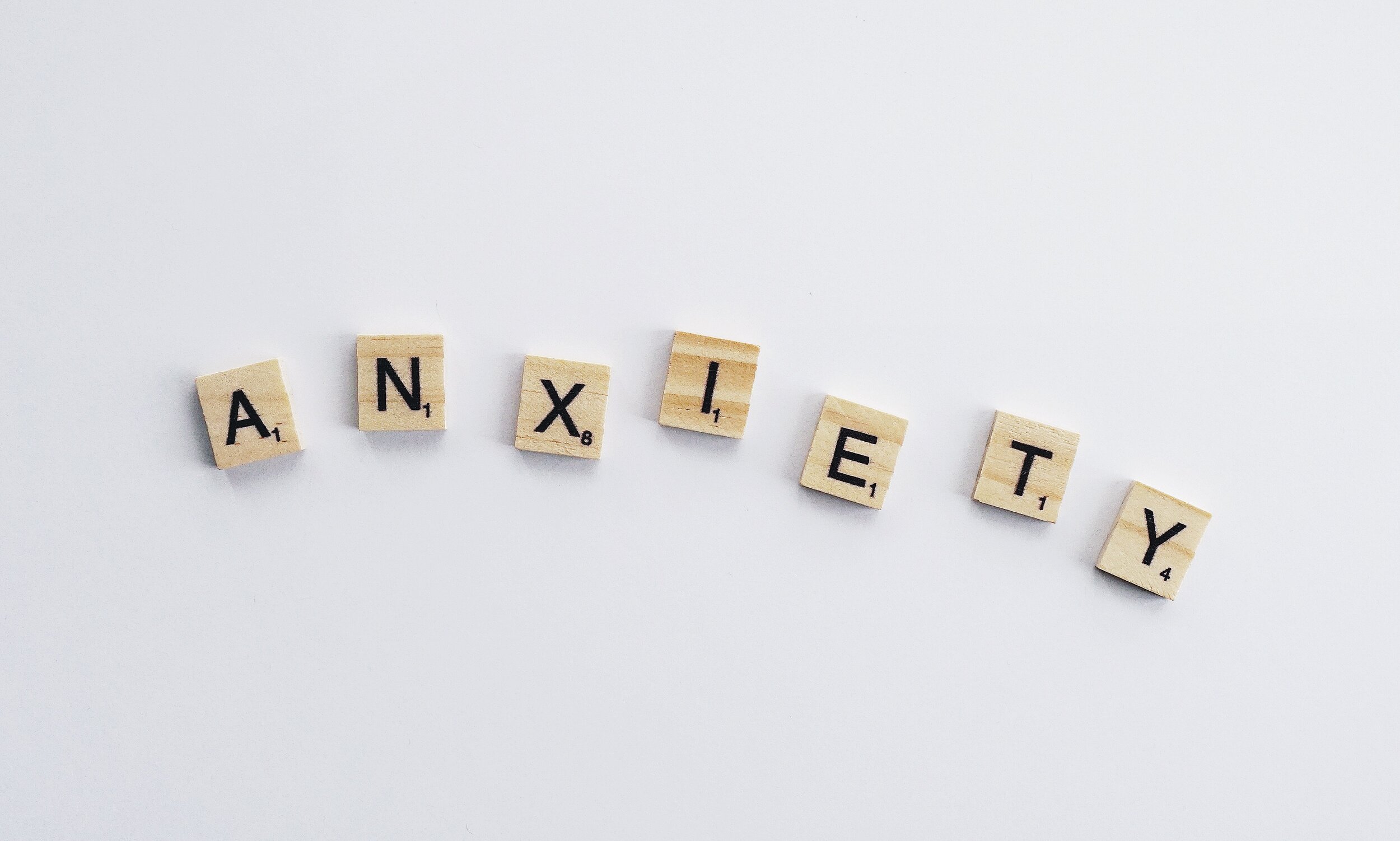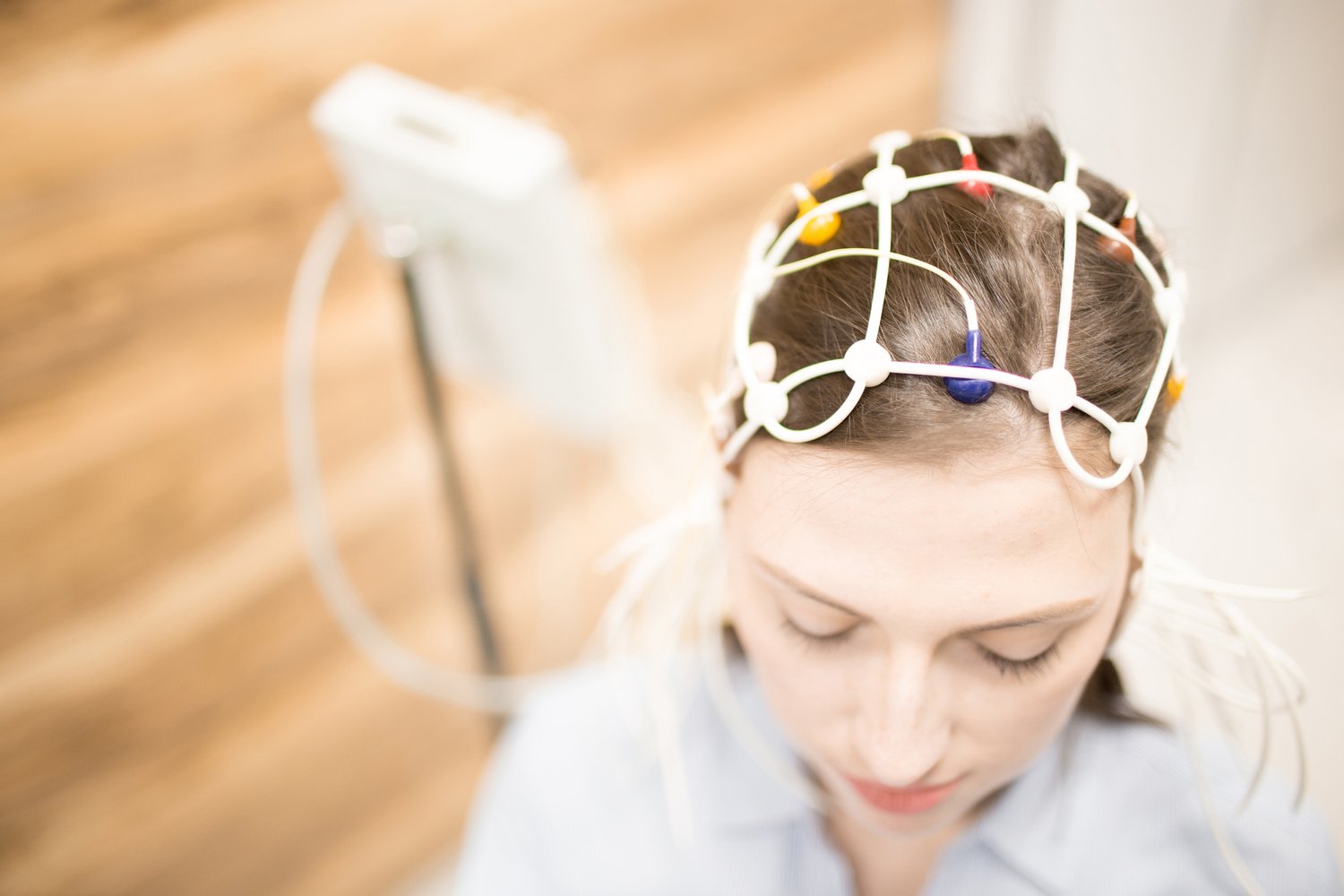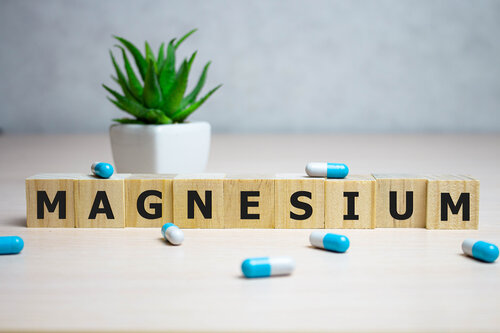Researchers are studying pink noise for its potential to help with sleep, memory, and more. In fact, it may have benefits not only as sound therapy, but also as gentle brain stimulation. In this article, we’ll review questions about pink noise including:
Understanding Waves: The Language of Music and the Brain
Before diving into the details, let’s review some of the basic principles for sound and other waves.
Waves exist in many different forms in nature, including the sounds that we hear and the brain waves that are needed for our neurons to communicate. Some forms of therapeutic brain stimulation even provide low levels of electric current through waves.
Every wave has two important characteristics:
-
Frequency is how fast a wave is. Faster sound frequencies have a higher pitch, and slower frequencies have a lower pitch.
-
Power is how strong or big a wave is. Higher power sound waves are louder, and weaker power waves are quieter.
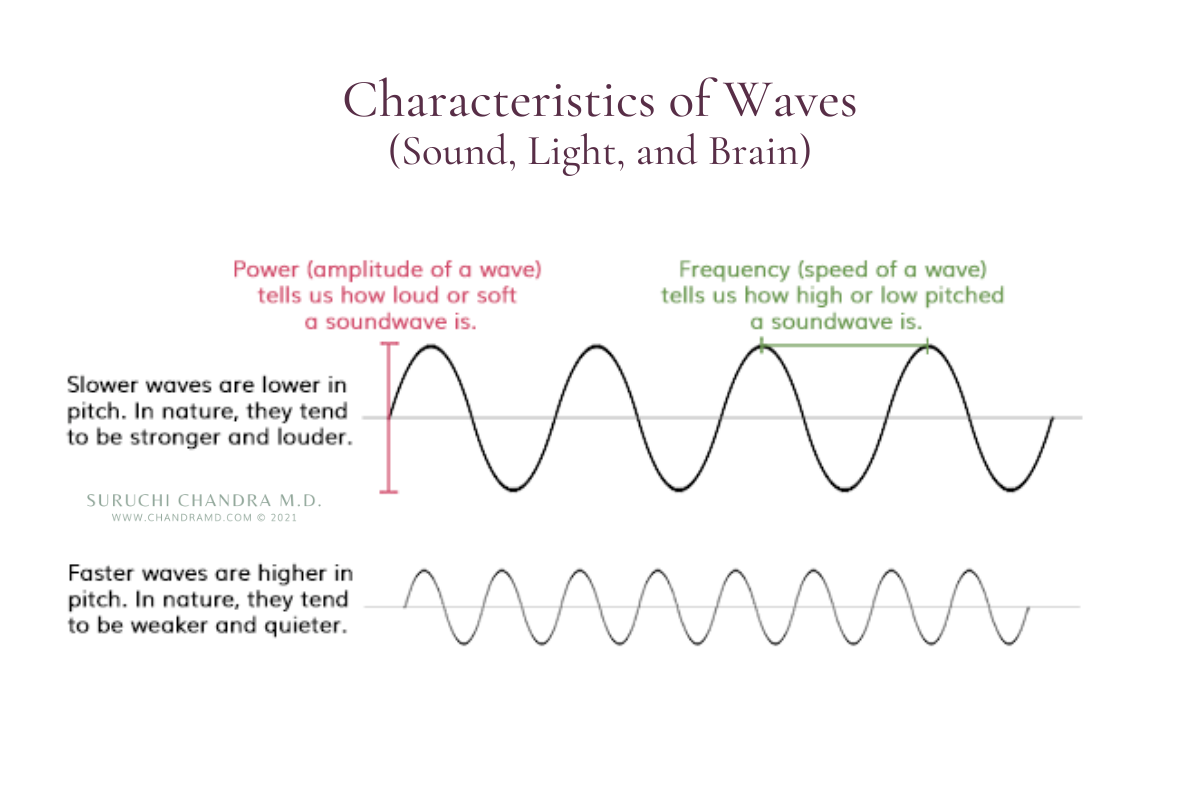
What is white noise? What does it sound like?
White noise is a type of background noise that includes a wide range of frequencies. In white noise, all of the frequencies have similar power. In other words, the lower and higher pitches in white noise are almost the same volume. Because of this wide range, white noise is helpful for blocking out many types of sounds, like noisy traffic, loud neighbors, or hallway chatter.
White noise often sounds like a steady hum, similar to television static, a running fan, or air conditioning.
What is pink noise? What does it sound like?
Pink noise is another type of background noise with a wide range of frequencies, but the lower frequencies have more power than higher frequencies. This means that lower pitches are louder than higher pitches.
Pink noise patterns are often found in nature, such as the sound of rainfall, ocean waves, and leaves rustling.
What’s the difference between white noise and pink noise?
All of the frequencies in white noise are equally loud, while frequencies in pink noise change in volume (i.e. lower frequencies are louder than higher frequencies). Because the lower frequencies are more prominent in pink noise, some people find it to be more calming and gentle than white noise.
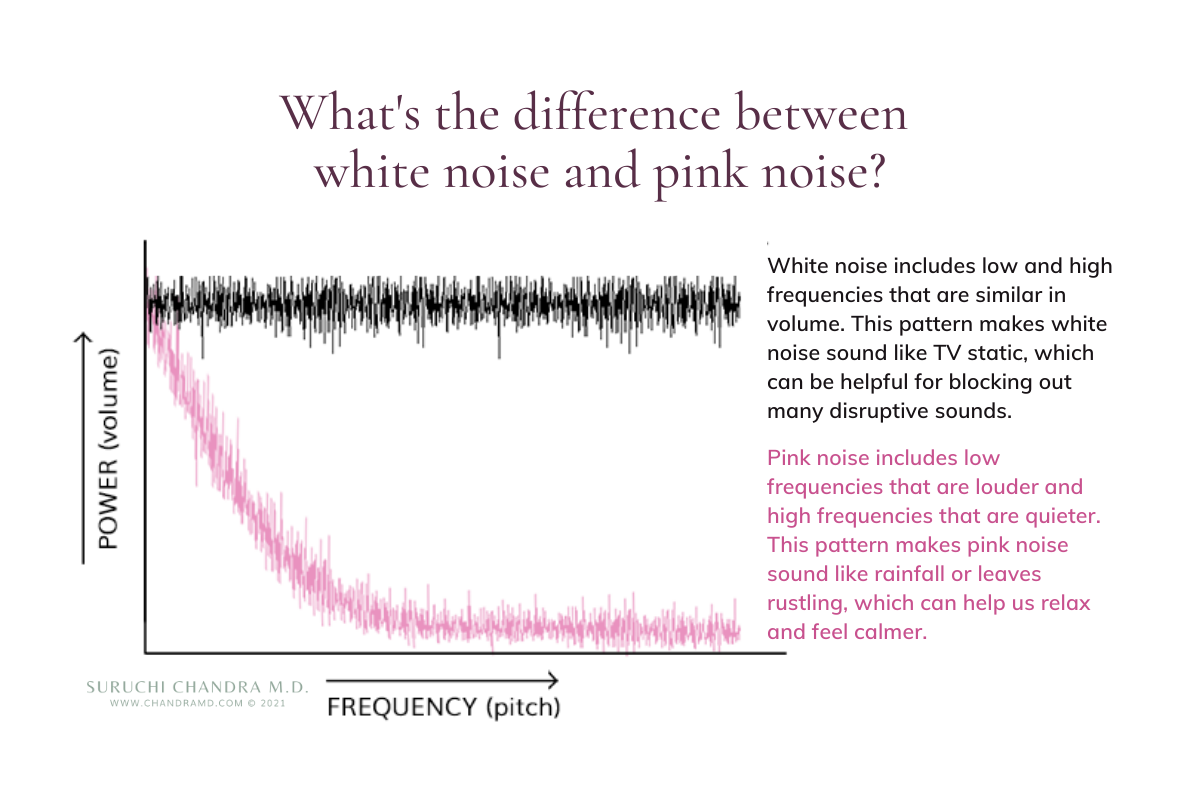
In white noise, power is more or less constant for each frequency, so its graph has a flat line. In pink noise, power decreases at higher frequencies, so its graph has a downward slope (known as an inverse relationship, or 1 / frequency).
This downward slope mirrors what happens in the brain and many systems in nature. When we measure brainwave activity using EEG, lower frequency brain waves associated with meditation and sleep have more power than higher frequency brain waves seen in alertness.
Is pink noise better than white noise?
There is more research to support the use of white noise, as pink noise has only been studied recently. The emerging research around pink noise, however, suggests that there are some reasons why it may be more promising for brain healing:
-
It can sound more soothing and be more calming for the nervous system than white noise.
-
Our brain cells communicate through brain waves that follow a pattern similar to pink noise. Because pink noise can match our brain wave patterns, it may be more stabilizing for the brain.
-
As our brains age, they produce more white noise and less pink noise. In other words, pink noise may be associated with younger and healthier brains.
Does pink noise help with sleep?
During sleep, our brains produce slower brain waves that allow the body and brain to enter a state of rest and restoration. There are fewer of the faster brain waves that occur during periods of focus and concentration.
Pink noise appears to amplify the power of the slower brain waves during deep sleep. When administered at night, it may help people fall asleep faster and get deeper, less fragmented sleep.
(While these preliminary studies are promising, they have typically involved a small number of people, so the results are not yet conclusive. Hopefully, we will have large-scale studies in the future to help us better understand the role of pink noise in sleep.)
What else is pink noise useful for?
MEMORY
Deep sleep is critical for consolidating and creating memories. As we get older, we generally spend less time in this restorative part of sleep, which may contribute to memory decline. In one study, researchers found that older adults who received pink noise sound therapy during sleep had improved sleep quality and performed better on memory tests the next day.
Another study examined younger adults, and those who listened to pink noise during an afternoon nap performed better on verbal memory tests than those who did not.
OTHER APPLICATIONS AND BENEFITS
Some researchers have seen promising results when pink noise is administered as transcranial brain stimulation. During transcranial brain stimulation, electrodes are placed on a patient’s head, and a very gentle, non-invasive electrical stimulus is administered.
Since collaborating with clinicians at Neurofield, a center in California that has pioneered the use of noise in neurostimulation, we have implemented pink noise in our clinic’s neurotherapy protocols. As a result, many of our patients have experienced improvements in several areas, including mood, motivation, focus, sleep, and brain fog. Patients have often described a lifting of their mood and feeling happier and lighter, generally after the first 4-5 sessions of pink noise brain stimulation.
While these clinical observations are promising, we need more research to fully understand how and to what this therapy may be beneficial for brain-based conditions.
New Options for Supporting Brain Health
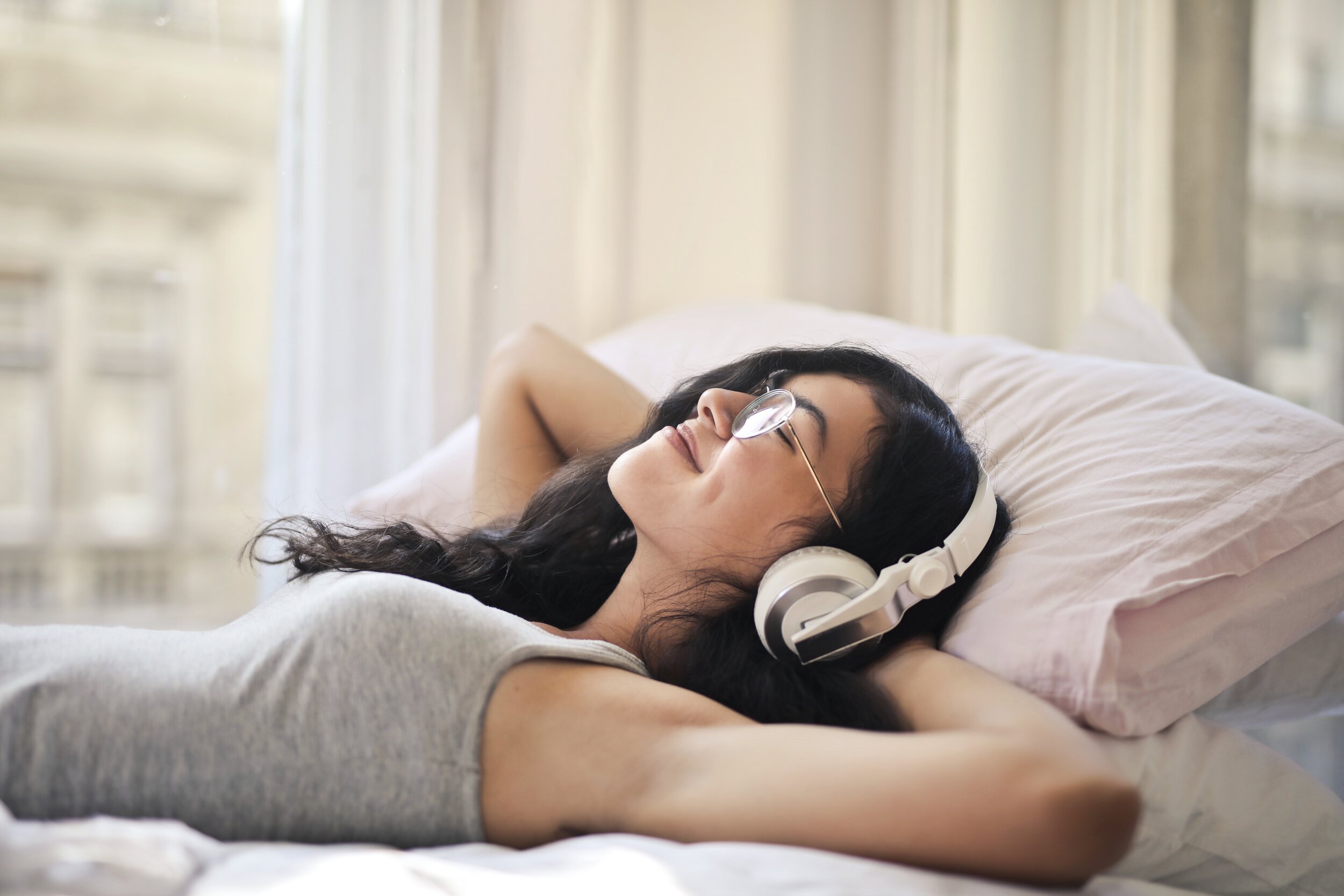
If you are interested in trying out pink noise, you can easily listen to it through apps, Youtube videos, and sound machines. However, keep in mind that these are not the same technology used in the research studies we discussed earlier, so you may not get the same benefits.
In the future, more doctors will administer treatment not just in capsules or tablets, but also as waveforms: sound, light, and electrical current. For those who are still struggling with sleep or memory issues even after trying medication, sound and brain stimulation therapies offer hope through new solutions.
If you have a brain-based condition such as depression, anxiety, or brain fog and are interested in finding a practitioner near you who uses pink noise brain stimulation, you can refer to the Neurofield database.
References
-
“Acoustic Enhancement of Sleep Slow Oscillations and Concomitant Memory Improvement in Older Adults” Frontiers in Human Neuroscience (2017), DOI: 10.3389/fnhum.2017.00109
-
“Brain’s ‘Background Noise’ May Hold Clues to Persistent Mysteries” Quanta Magazine (2021)
-
“Spectral content (colour) of noise exposure affects work efficiency” Noise Health (2020), DOI: 10.4103/nah.NAH_61_18
-
“Effects of phase-locked acoustic stimulation during a nap on EEG spectra and declarative memory consolidation” Sleep Med (2016), DOI: 10.1016/j.sleep.2015.10.016
-
“Sleep Induction Effects of Steady 60 dB (A) Pink Noise” Industrial Health (1993), DOI: 10.2486/indhealth.31.35
-
“Enhancing Slow Oscillations and Increasing N3 Sleep Proportion with Supervised, Non-Phase-Locked Pink Noise and Other Non-Standard Auditory Stimulation During NREM Sleep” Nat Sci Sleep (2020), DOI: 10.2147/NSS.S243204
-
“Sleep deepening effect of steady pink noise” Journal of Sound and Vibration (1991), DOI: 10.1016/0022-460X(91)90537-T
-
“Pink Noise Boosts Deep Sleep in Mild Cognitive Impairment Patients” Annals of Clinical and Translational Neurology (2019), DOI: 10.1002/acn3.796
-
“Auditory closed-loop stimulation of the sleep slow oscillation enhances memory” Neuron (2013), DOI: 10.1016/j.neuron.2013.03.006
-
“The Sound of ‘Pink Noise’ Improves Sleep and Memory” Time (2017)
-
“Transcranial Electric Stimulation for Precision Medicine: A Spatiomechanistic Framework” Frontiers in Human Neuroscience (2017), DOI: 10.3389/fnhum.2017.00159
-
“Pink noise: effect on complexity synchronization of brain activity and sleep consolidation” Journal of Theoretical Biology (2012), DOI: 10.1016/j.jtbi.2012.04.006
The information and any products mentioned in this article are not intended to diagnose, treat, cure, or prevent any disease. The information provided is for educational purposes only and not intended to replace the relationships with your physician(s). Before initiating any conventional or integrative treatments, please first consult with a licensed medical provider. Please review references cited at the end of article for scientific support of any claims made.
